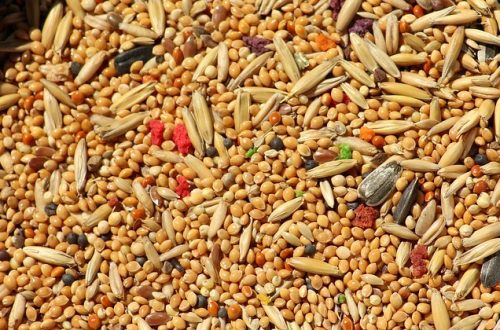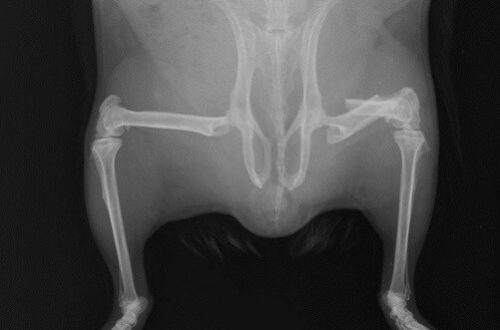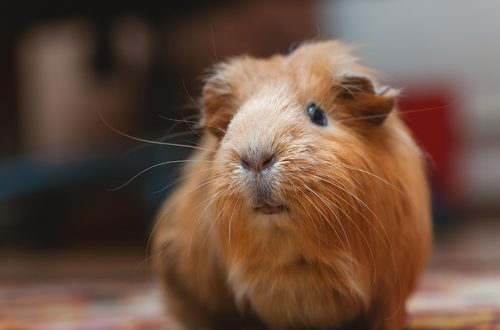
Physiological Data
Kaundan
Kasagaran nga mga kinaiya
The guinea pig, unlike other representatives of the rodent order, has some features. So, there are only 20 teeth, which are already present in newborns. Of these, four incisors – two on the upper and two on the lower jaw. Fangs are absent. Four premolars and twelve molars. The chewing surface of the molars – molars and premolars is covered with tubercles.
The body of guinea pigs is cylindrical. The front legs are shorter than the hind legs and have four toes, while the hind legs have only three.
In the back of the abdomen, the female guinea pig has one pair of mammary glands.
The guinea pig, compared to other rodents, is born with the most developed brain. By the time of birth, she ends the morphological development of the structures of the cerebral cortex. The nervous system of newborns is able to provide adaptability for independent living.
The heart of adult guinea pigs weighs 2,0-2,5 g. The average heart rate is 250-355 per minute. Cardiac impulse is weak, spilled. The morphological composition of the blood is as follows: 5 million erythrocytes per 1 mm3, hemoglobin – 2%, 8-10 thousand leukocytes per 1 mm3.
The lungs of guinea pigs are sensitive to mechanical influences and the actions of infectious agents (viruses, bacteria). The frequency of respiratory movements is normal 80-130 times per minute.
The guinea pig, unlike other representatives of the rodent order, has some features. So, there are only 20 teeth, which are already present in newborns. Of these, four incisors – two on the upper and two on the lower jaw. Fangs are absent. Four premolars and twelve molars. The chewing surface of the molars – molars and premolars is covered with tubercles.
The body of guinea pigs is cylindrical. The front legs are shorter than the hind legs and have four toes, while the hind legs have only three.
In the back of the abdomen, the female guinea pig has one pair of mammary glands.
The guinea pig, compared to other rodents, is born with the most developed brain. By the time of birth, she ends the morphological development of the structures of the cerebral cortex. The nervous system of newborns is able to provide adaptability for independent living.
The heart of adult guinea pigs weighs 2,0-2,5 g. The average heart rate is 250-355 per minute. Cardiac impulse is weak, spilled. The morphological composition of the blood is as follows: 5 million erythrocytes per 1 mm3, hemoglobin – 2%, 8-10 thousand leukocytes per 1 mm3.
The lungs of guinea pigs are sensitive to mechanical influences and the actions of infectious agents (viruses, bacteria). The frequency of respiratory movements is normal 80-130 times per minute.
Panguna nga mga hinungdan
| hatag hiyas | bili |
|---|---|
| Birth weight | 50-110 g |
| Body weight of an adult animal | 700-1000(1800) g |
| Maturity of females | 30 adlaw |
| Sexual maturity of males | 60 adlaw |
| Ang gidugayon sa siklo | 16 adlaw |
| Gidugayon sa pagmabdos | (60)-65-(70) days |
| Number of cubs | 1-5 |
| Maturity for reproduction | 3 bulan |
| Age of weaning | 14-21 days (weight 160 g) |
| gitas-on sa lawas | 24-30 tan-awa |
| Paglaum sa kinabuhi | 4-8 ka tuig |
| Core body temperature | 37-39 ° C |
| gininhawa | 100-150 / min |
| Pulse | 300 minuto |
| hatag hiyas | bili |
|---|---|
| Birth weight | 50-110 g |
| Body weight of an adult animal | 700-1000(1800) g |
| Maturity of females | 30 adlaw |
| Sexual maturity of males | 60 adlaw |
| Ang gidugayon sa siklo | 16 adlaw |
| Gidugayon sa pagmabdos | (60)-65-(70) days |
| Number of cubs | 1-5 |
| Maturity for reproduction | 3 bulan |
| Age of weaning | 14-21 days (weight 160 g) |
| gitas-on sa lawas | 24-30 tan-awa |
| Paglaum sa kinabuhi | 4-8 ka tuig |
| Core body temperature | 37-39 ° C |
| gininhawa | 100-150 / min |
| Pulse | 300 minuto |
Sistema sa dugo
| index | bili |
|---|---|
| Damu sa dugo | 5-7 ml / 100 g of weight |
| Erythrocytes | 4,5-7×106/1 cubic mm |
| Hemoglobin | 11-15 g/100 ml |
| Hematocrit | 40-50% |
| leukocyte | 5-12×103/1 cu. mm |
The content of leukocytes in the blood increases with age. ROE for one hour – 2 mm for two hours – 2,5 mm. It is useful for owners to know these average indicators of the main blood parameters of guinea pigs.
Differential blood picture (hemogram)
| index | bili |
|---|---|
| Mga lymphocyte | 45-80% |
| Mga Monocyte | 8-12% |
| Neutrophils | 20-40, 35% |
| Eosinophils | 1-5% |
| Mga basophil | 1-2% |
| Bilirubin | 0,24-0,30 mg / dL |
| Glucose | 50-120 mg/100 ml |
| index | bili |
|---|---|
| Damu sa dugo | 5-7 ml / 100 g of weight |
| Erythrocytes | 4,5-7×106/1 cubic mm |
| Hemoglobin | 11-15 g/100 ml |
| Hematocrit | 40-50% |
| leukocyte | 5-12×103/1 cu. mm |
The content of leukocytes in the blood increases with age. ROE for one hour – 2 mm for two hours – 2,5 mm. It is useful for owners to know these average indicators of the main blood parameters of guinea pigs.
Differential blood picture (hemogram)
| index | bili |
|---|---|
| Mga lymphocyte | 45-80% |
| Mga Monocyte | 8-12% |
| Neutrophils | 20-40, 35% |
| Eosinophils | 1-5% |
| Mga basophil | 1-2% |
| Bilirubin | 0,24-0,30 mg / dL |
| Glucose | 50-120 mg/100 ml |
Sistema sa pagsanay
The gastrointestinal tract is well developed and, like other herbivores, relatively large. The volume of the stomach is 20 – 30 cm3. It is always filled with food. The intestine reaches a length of 2,3 m and is 10-12 times the length of the body. Guinea pigs have a well-developed excretory system. An adult animal excretes 50 ml of urine containing 3,5% uric acid.
| index | bili |
|---|---|
| Amount of feces per day | hangtod sa 0,1 kg |
| Water content in feces | 70% |
| Amount of urine per day | 0,006-0,03 l |
| Relative density of urine | 1,010-1,030 |
| Sulud sa abo | 2,0% |
| Urine reaction | alkaline |
| Ang komposisyon sa gatas | (%) |
|---|---|
| uga nga butang | 15,8 |
| protina | 8,1 |
| tambok | 3,9 |
| kasein | 6,0 |
| lactose | 3,0 |
| abo | 0,82 |
The gastrointestinal tract is well developed and, like other herbivores, relatively large. The volume of the stomach is 20 – 30 cm3. It is always filled with food. The intestine reaches a length of 2,3 m and is 10-12 times the length of the body. Guinea pigs have a well-developed excretory system. An adult animal excretes 50 ml of urine containing 3,5% uric acid.
| index | bili |
|---|---|
| Amount of feces per day | hangtod sa 0,1 kg |
| Water content in feces | 70% |
| Amount of urine per day | 0,006-0,03 l |
| Relative density of urine | 1,010-1,030 |
| Sulud sa abo | 2,0% |
| Urine reaction | alkaline |
| Ang komposisyon sa gatas | (%) |
|---|---|
| uga nga butang | 15,8 |
| protina | 8,1 |
| tambok | 3,9 |
| kasein | 6,0 |
| lactose | 3,0 |
| abo | 0,82 |
Guinea pigs have good hearing and sense of smell. When kept at room conditions, guinea pigs behave calmly, are easy to train, quickly get used to and recognize the owner. They can be taken in hand. With good hearing, guinea pigs get used to the owner’s voice, so you need to talk to them more often. However, when exposed to external stimuli unfamiliar to the animal, they are easily excited and are shy.
If necessary, a good examination of the guinea pig is taken with the left hand behind the back and under the chest so that the thumb and forefinger cover the neck, while the other fingers immobilize the forelimbs and limit the movement of the head. The right hand holds the back of the body.
Guinea pigs have good hearing and sense of smell. When kept at room conditions, guinea pigs behave calmly, are easy to train, quickly get used to and recognize the owner. They can be taken in hand. With good hearing, guinea pigs get used to the owner’s voice, so you need to talk to them more often. However, when exposed to external stimuli unfamiliar to the animal, they are easily excited and are shy.
If necessary, a good examination of the guinea pig is taken with the left hand behind the back and under the chest so that the thumb and forefinger cover the neck, while the other fingers immobilize the forelimbs and limit the movement of the head. The right hand holds the back of the body.
Guinea pig temperature
The normal body temperature of guinea pigs is in the range of 37,5-39,5°C.
Pagtagad!
An increase in temperature above 39,5 ° C indicates that your pet is sick.
To measure the temperature, the animal is held belly up on the left hand. With the thumb of the left hand, they press on the inguinal region so that the anus can be better seen, and with the right hand, a disinfected and vaseline-lubricated thermometer is inserted into the rectum. Enter it in two doses. At first, they are held almost vertically, and then lowered to a horizontal position. The thermometer uses a conventional mercury medical or veterinary.
With good care and maintenance, a guinea pig lives up to eight to ten years.
However, like any living creature, the guinea pig is susceptible to infectious and parasitic diseases. It is necessary to create good sanitary and hygienic conditions of keeping, good nutrition, and avoid crowding of animals. It must be remembered that the guinea pig is afraid of dampness and drafts.
Pagtagad!
Having discovered the unusual behavior of the animal – reduced motor activity, the absence of characteristic sounds made by usually healthy animals, you should take a closer look at the guinea pig. If the animal is lethargic, trembling, the coat is tousled or it has rapid breathing, reduced appetite, loose stools, then it must be shown to the veterinarian. The same should be done if an abortion occurs in a pregnant female.
Guinea pigs are less likely to be affected by helminths than other animals.
The normal body temperature of guinea pigs is in the range of 37,5-39,5°C.
Pagtagad!
An increase in temperature above 39,5 ° C indicates that your pet is sick.
To measure the temperature, the animal is held belly up on the left hand. With the thumb of the left hand, they press on the inguinal region so that the anus can be better seen, and with the right hand, a disinfected and vaseline-lubricated thermometer is inserted into the rectum. Enter it in two doses. At first, they are held almost vertically, and then lowered to a horizontal position. The thermometer uses a conventional mercury medical or veterinary.
With good care and maintenance, a guinea pig lives up to eight to ten years.
However, like any living creature, the guinea pig is susceptible to infectious and parasitic diseases. It is necessary to create good sanitary and hygienic conditions of keeping, good nutrition, and avoid crowding of animals. It must be remembered that the guinea pig is afraid of dampness and drafts.
Pagtagad!
Having discovered the unusual behavior of the animal – reduced motor activity, the absence of characteristic sounds made by usually healthy animals, you should take a closer look at the guinea pig. If the animal is lethargic, trembling, the coat is tousled or it has rapid breathing, reduced appetite, loose stools, then it must be shown to the veterinarian. The same should be done if an abortion occurs in a pregnant female.
Guinea pigs are less likely to be affected by helminths than other animals.





